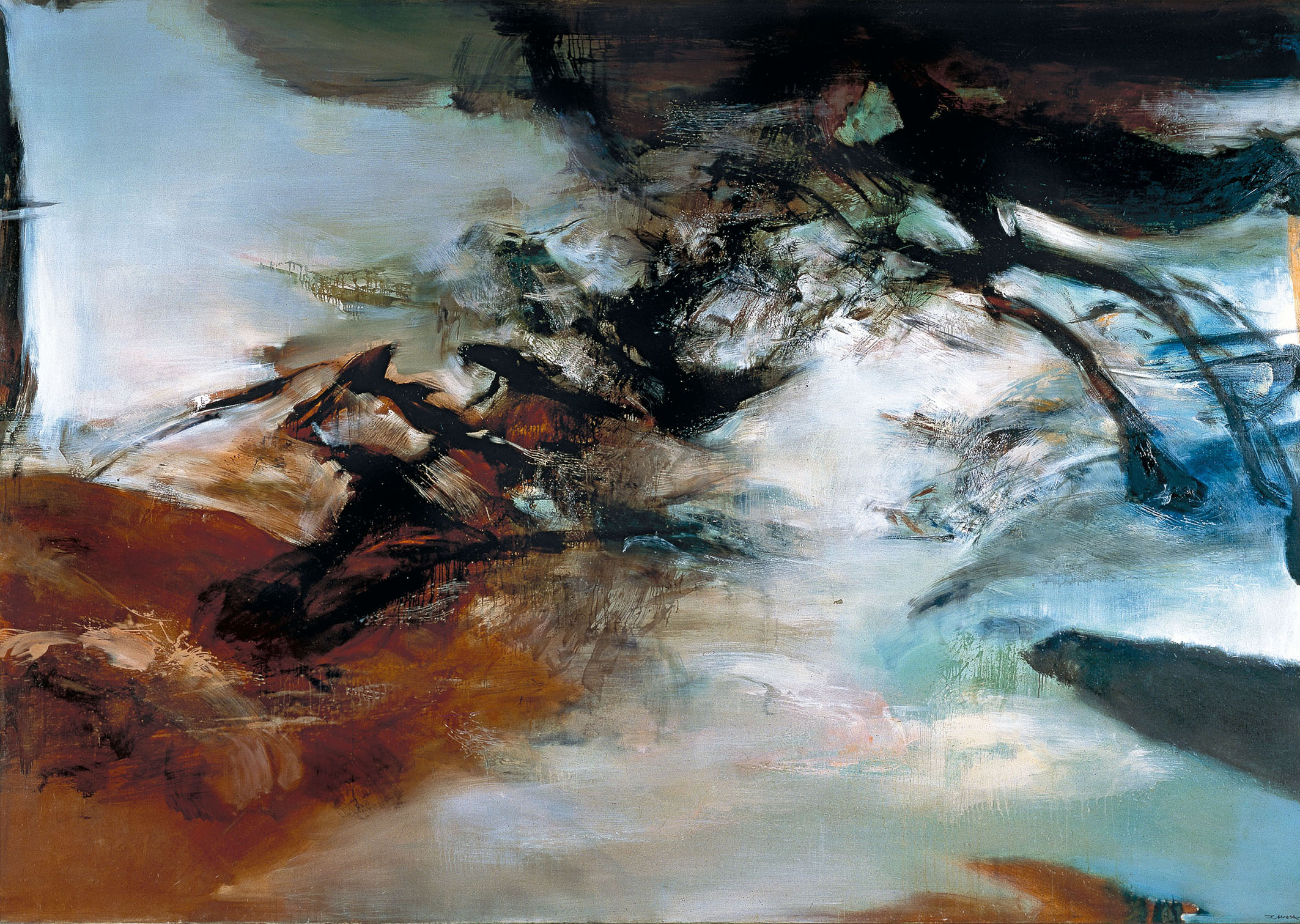
往期展览 01.10.2022 - 20.02.2023
Temporary exhibitions – September 2022 – January 2023
Le Musée de l’histoire de l’immigration (The Museum of Immigration History) inaugurates this fall the temporary exhibition entitled “Paris et nulle part ailleurs” (Paris and nowhere else). Dedicated to foreign artists who came to study, work or live in Paris after World War II, it intends to show that, even in spite of the increasing appeal of New York City during the 1950s, it is still in the French capital that during this period a great number of artists and intellectuals from all over the world choose to train and create, thus becoming the home of artistic Avant-Gardes that will revolutionize art history.
The visit develops along several themes, covering the period from 1942 to 1975. Therefore we discover exile, then the exploration and adaptation to a whole new world, but we also see the sometimes difficult daily life of these artists facing a dreamed but yet unknown city. Discovering new methods, materials and techniques, foreign painters, drawers and sculptors compose their own artistic language in contact with the local cultural scene, either in Montparnasse or in Saint-Germain-des-Prés.
Twenty four artists and more than a hundred works are presented within this exhibition. Coming from Portugal (Maria-Helena Vieira da Silva), from Senegal (Iba N’Diaye), from Japan (Tetsumi Kudo) but also from China (Zao Wou-Ki), they have one thing in common, their new country, a source of infinite inspiration.
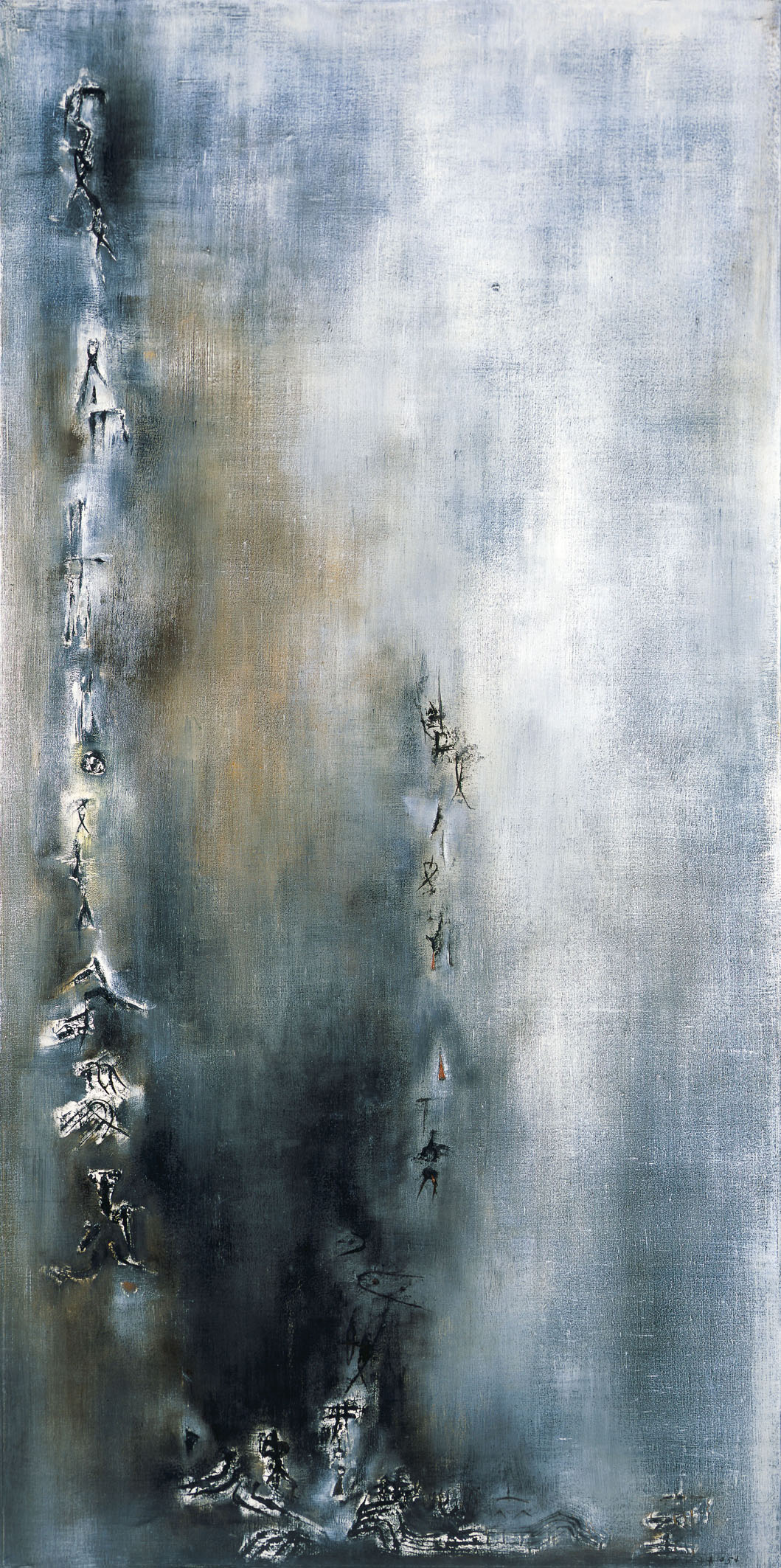
Zao Wou-Ki, Vent (Wind), oil on canvas, 1954, 195 x 97 cm, Musée national d’art moderne, Paris
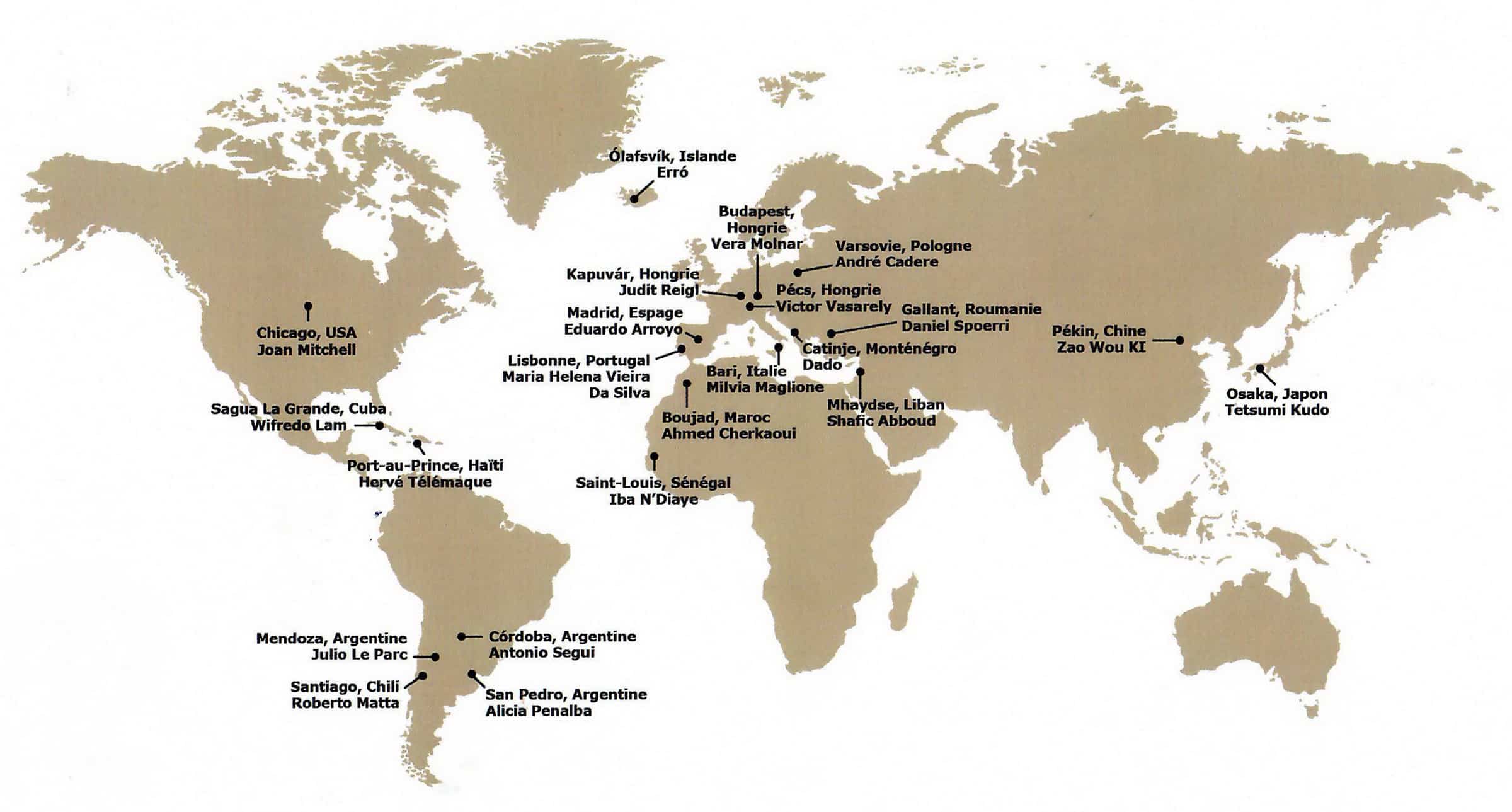
Paris based artists migration map. Courtesy Dossier pédagogique, Palais de la Porte Dorée
Arriving in Paris in 1948 where he will live for over sixty years, Zao Wou-Ki, because of his own life story, fully integrates into this retrospective journey. Leaving China where he feels trapped by tradition, Zao Wou-Ki discovers in France new ways of painting. Even if he refuses for some time his Chinese training, he soon includes archaic signs in his compositions but he remains very far away from the “chinoiseries” he fully rejects. Facing the movements of abstraction, he creates a unique artistic language at the crossroad of Chinese and Western cultures. Zao Wou-Ki thus actively contributes to the artistic renewal happening in Paris during the 1950s, establishing friendly links with those who, like him, have left their home land for the City of Lights. Evidencing some of the most contemporary themes such as immigration, the confrontation and mixing of cultures, this exhibition highlights the significant contribution of these artistic and human exchanges.
Meanwhile, the Tate Modern in London proposes a new layout of its permanent exhibitions. Thanks to a journey entitled “In the Studio”, the visitor is invited to think about the relationship between art work and artist, be it through the portrait of its creator, the space in his studio or also the question of perception. Presented in twelve thematic rooms (« Studio Practice », « International Surrealism », « Gerhard Richter »…) and interspersed with archival elements, this exhibition seeks to establish a new approach of the Tate Modern collections.
It is under the theme « The Disappearing Figure : Art After Catastrophe » that Zao Wou-Ki’s work Avant l’orage (Before the storm) (1955, oil on canvas, 72,5 x 53,5 cm, purchased in 1958) is presented. Aiming to reveal the impact of World War II on the artistic scene, this room highlights the attempts made by the artists to adjust to post-war social and political concerns. Some take their inspiration in extra-European archaic art or in children drawings (Karel Appel, Hiep, hiep, hoera !, 1949, oil on canvas, purchased with the help of Evelyn, of the Lady Downshire Funds and of the Gytha Trust, 1988), others experiment new industrial or natural materials (Kim Ku-lim, Death of Sun I, 1964, oil and plastic on plywood, purchased to the artist thanks to the funds supplied by the Comité d’acquisition Asie-Pacifique (Asia-Pacific Acquisition Committee) 2016), they can also depict human figures or give way to abstraction (Barnett Newman, Moment, 1946, oil on canvas, presented by Ms Annalee Newman, the artist’s widow, in honor of Sir Alan Bowness’ management, 1988), but all the artists question the fragile world where they live.

Zao Wou-Ki, Avant l’orage, (Before the storm) oil on canvas, 1955, 72,5 x 53,5 cm, Tate Modern, London
With its dark tones where black prevails, Zao Wou-Ki’s painting expresses this anxiety when facing the unknown, be it on a private or societal level. Presenting signs that evoke the archaic characters of his native China, this work is the perfect example of Zao Wou-Ki’s personal quest within an evolving artistic world.
The Société Générale (French bank) presents during this fall (June 30th 2022 – January 31st 2023) an exhibition entitled : “Under the pattern. The structures of abstraction”. With the presentation of more than seventy works coming from the Société Générale Art Collection and from exceptional loans, it retraces the last decades of abstract art, from the post-war period to nowadays. Mixing techniques and supports (Paintings, sculptures, drawings, etc …) this exhibition highlights the diversity of abstraction and its representatives, thus exploring at the same time the singular imaginaries of each artist.
Zao Wou-Ki’s painting presented in this exhibition, 19.10.76, is part of the Société Générale Collection (Oil on canvas, 1976, 85 x 70 cm, purchased in 1996). Alongside works by Ann Veronica Janssens, Aurélie Nemours or also Takis, it proposes an answer to the questioning about our relationship to the world and its images that this exhibition, led by its curator Matthieu Poirier, tries to evidence.
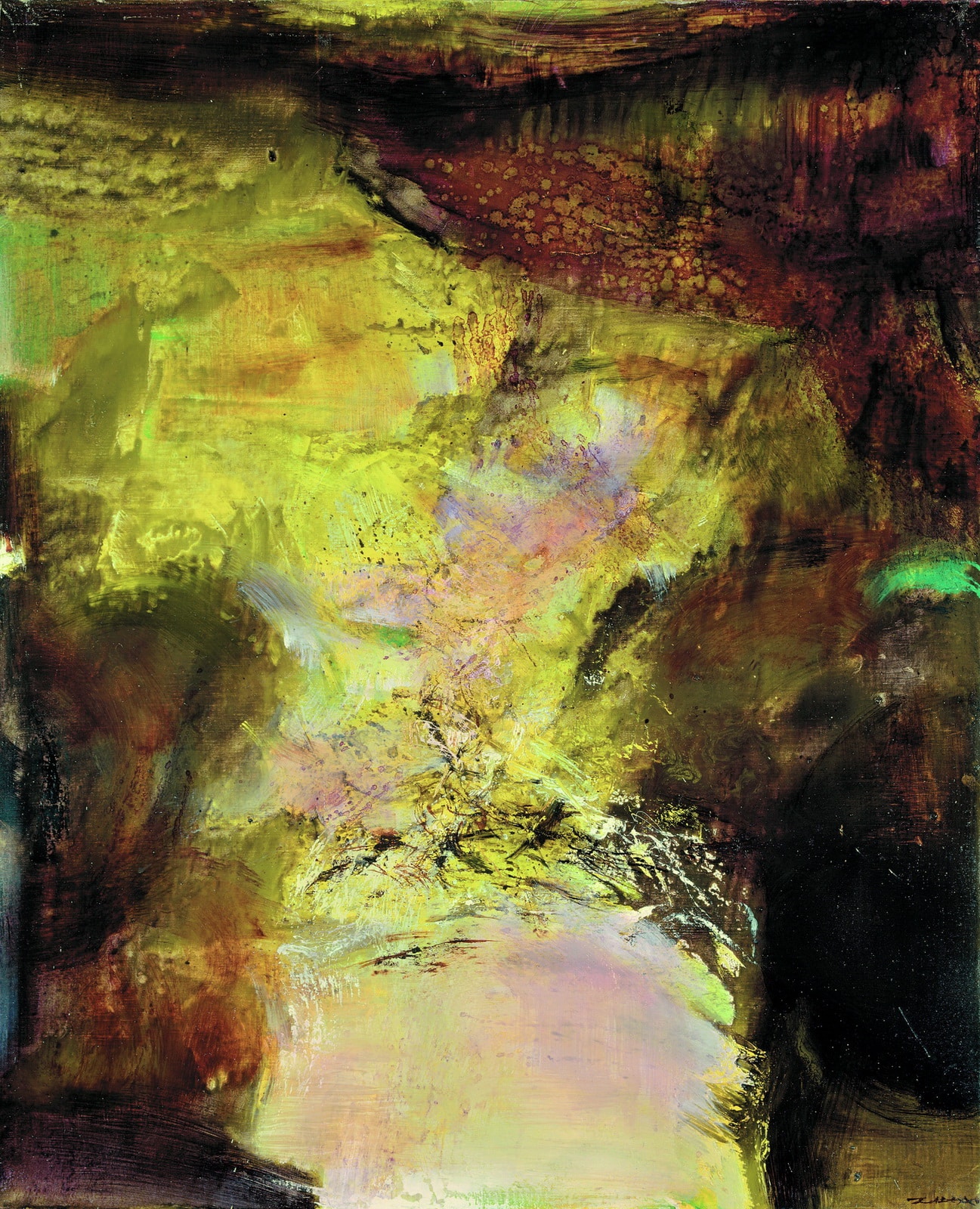
Zao Wou-Ki, 19.10.76, oil on canvas, 1976, 85 x 70 cm, Société Générale, Puteaux
This fall (October 17th – December 23rd 2022) also starts at the Galerie Thaddeus Ropac in the Marais district of Paris, a new exhibition dedicated to the American artist Robert Longo : “The New Beyond”. Exclusively working with charcoal for several years, Longo reproduces, in this series, emblematic works of post-war European art such as works by Piero Manzoni, Yves Klein, Zao Wou-Ki or also Pierre Soulages.
Particularly sensitive to the political and social events that affect and disrupt the 20th and 21st Centuries and to the media that broadcast them, Robert Longo is known through his participation in the “Pictures Generation” movement which, through photography, painting or performance, aimed to criticize and denounce the effects of capitalism and media in the United States – a concern that reappears in his recent works, as in his series The Destroyer Circle dated 2014.
The revisit of paintings from Abstract Expressionism in 2014, and then, in 2022, of works from post-war movements, underlines the American artist’s will to question the importance and influence of these artists on contemporary art, but also on our world and on the importance image has in it. As a matter of fact, as well as being a tribute to the artists he admires, this series goes beyond the limits of charcoal as a medium, enhancing the technique, the pixelation or the material of the original work while changing its format. Longo thereby questions our relationship with the image and the way they become part of our definition of our time.

Zao Wou-Ki, 10.03.74 -Nous deux encore, (10.03.74 – The two of us again) oil on canvas, 1974, 280 x 400 cm, Fukuoka Art Museum, Fukuoka, Japan
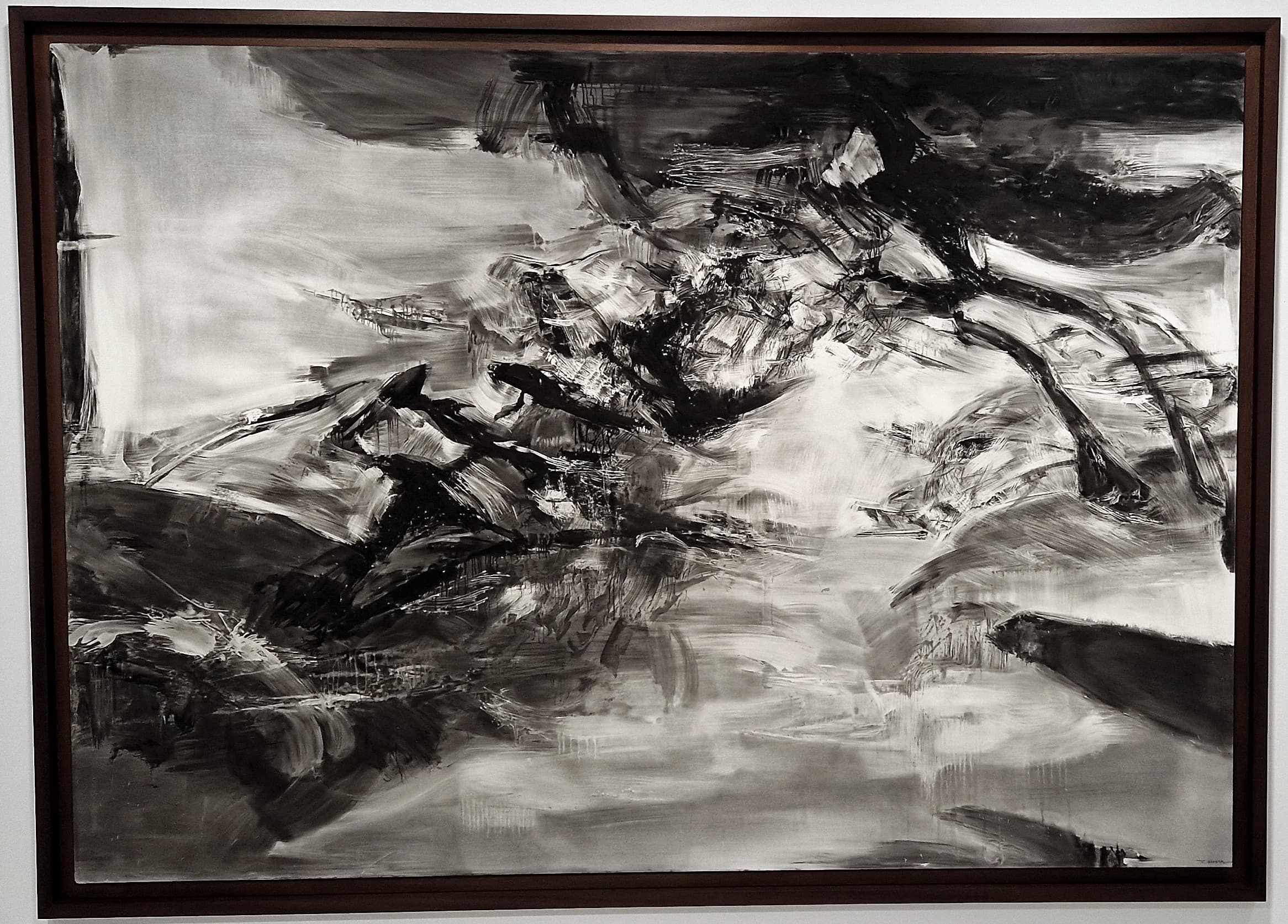
Painted after the death of his wife, May, borrowing the title of a poem by Henri Michaux dedicated to his dead wife, Zao Wou-Ki’s work 10.03.74 – Nous deux encore (10.03.74 – The two of us again) (1974, 280 x 400 cm, Fukuoka Art Museum, Fukuoka, Japan) transposed by Longo highlights liberation through movement, a major work that will no doubt have appealed to the American artist who loved large formats.
